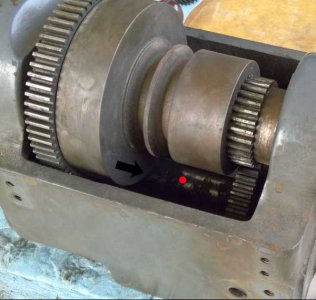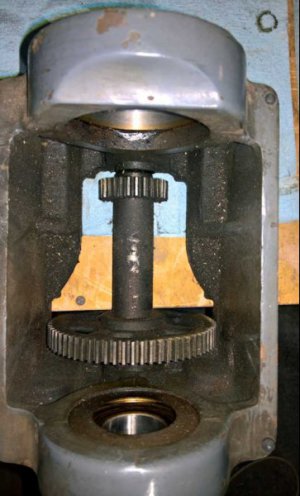- Joined
- Jul 30, 2017
- Messages
- 475
After
Bill50 is absolutely correct..
You can Machine Oillite bearings with a special diamond blade and you can change and or recharge Oilite bearings too..! After much researching and making calls about this issue, The ideal recommended way to recharge an oillite bearing is by pulling a vacuum on the bearing introducing fresh none detergent SAE 30w oil and releasing the vacuum causing the oil to be drawn into the bearing.
Another acceptable way is heating SAE 20w none detergent oil to 180°F, place the Oillite bearing in the heated oil for 2 hours, and let cool down naturally while remaining submerged. The air & moisture will heat and expand being expelled, while cooling the pressure will lower in the voids drawing in oil.. Note: This is a maintenance Hack, it will not replenish the bearing fully..
I read Oillite bearing were originally created under extreme pressure using the bearing materials which their are many, and saw dust - then heated to burn off the saw dust and fuse the bearing material, then using a vacuum to fill the bearing with oils along with other fortifying materials.
I have posted links to the Oillite manufacturers websites that describe this methodology in my Logan restoration thread.. I have not found a proper answer yet to the question about what happens to Oillite bearing in a electrolytic bath, when I do I will post it here.
Also do not mechanically clean Oillite bearings by, sanding or grinding.. this can collapses and or force debris into the voids closing them off.
Hopefully ill have more info soon.. Mike.
If you are talking about oilite bronze bearings. You can re-oil them by putting them in a warm oil bath for a couple hours. We had to do the re-oiling on bearings for aircraft after machining. The heat from machining would let some of the oil leach out.
Bill50 is absolutely correct..
You can Machine Oillite bearings with a special diamond blade and you can change and or recharge Oilite bearings too..! After much researching and making calls about this issue, The ideal recommended way to recharge an oillite bearing is by pulling a vacuum on the bearing introducing fresh none detergent SAE 30w oil and releasing the vacuum causing the oil to be drawn into the bearing.
Another acceptable way is heating SAE 20w none detergent oil to 180°F, place the Oillite bearing in the heated oil for 2 hours, and let cool down naturally while remaining submerged. The air & moisture will heat and expand being expelled, while cooling the pressure will lower in the voids drawing in oil.. Note: This is a maintenance Hack, it will not replenish the bearing fully..
I read Oillite bearing were originally created under extreme pressure using the bearing materials which their are many, and saw dust - then heated to burn off the saw dust and fuse the bearing material, then using a vacuum to fill the bearing with oils along with other fortifying materials.
I have posted links to the Oillite manufacturers websites that describe this methodology in my Logan restoration thread.. I have not found a proper answer yet to the question about what happens to Oillite bearing in a electrolytic bath, when I do I will post it here.
Also do not mechanically clean Oillite bearings by, sanding or grinding.. this can collapses and or force debris into the voids closing them off.
Hopefully ill have more info soon.. Mike.
Last edited:



